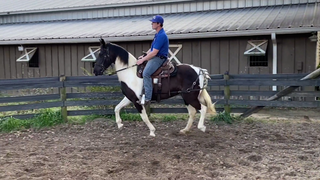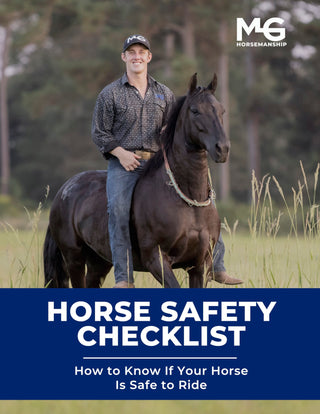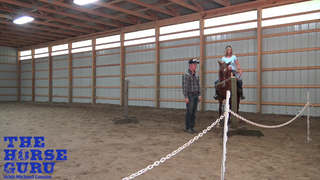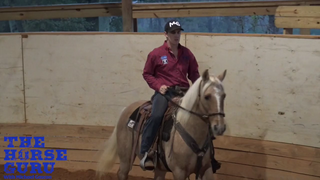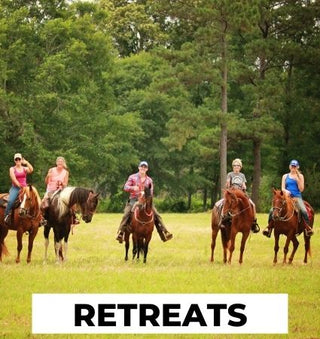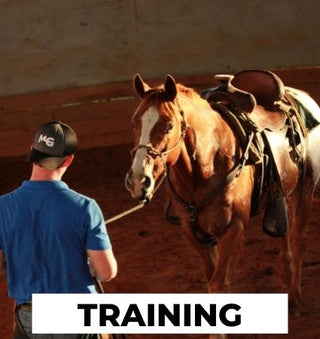Watch the Video Here or continue reading below!
If you're looking to enhance your gaited horse’s balance, comfort, and performance—especially when riding in challenging terrain or working on better collection—using a breeching (also spelled "britching") can be a game-changer. In this post, horse trainer Michael Gascon, also known as The Horse Guru, breaks down exactly why breeching is such a valuable tool—not only for trail riders, but for anyone working with gaited horses.
🐎 What Is a Breeching, and Why Use It on a Gaited Horse?
A breeching is a strap system that fits around the horse’s hindquarters and attaches to the saddle at three points: the top of the back and both sides of the cinch. While traditionally seen on driving horses or pack animals, breeching is quickly gaining popularity for riding horses—especially gaited breeds like Spotted Saddle Horses, Paso Finos, and Tennessee Walkers.
Michael introduces us to Miss Suzy, a five-year-old spotted saddle horse who had been struggling with pacing and being strung out. By using breeching, she began to move more comfortably and with better collection.
🔧 Easy to Install and Use on Any Saddle
You don’t need special tack to use breeching. As Michael explains:
-
If your saddle doesn’t have a back ring, simply install one using a basic hardware ring.
-
Always hook the top ring first and unhook it last to avoid the breeching slipping under the horse's legs if it shifts.
This makes breeching a versatile and accessible tool for nearly any rider, regardless of saddle type.
🎯 Top 3 Benefits of Breeching for Gaited Horses
1. Encourages Collection
Think of breeching as a collection aid. When the horse overextends behind, the breeching offers gentle feedback, encouraging them to engage their hindquarters and move more correctly.
Michael compares it to the feeling of wearing a tight skirt: “You’re going to walk a little differently.” The horse will begin to naturally keep their hind end underneath them, which is essential for smooth, balanced gaits.
2. Desensitizes the Hindquarters
Horses can be sensitive about having anything touch their hind end. Breeching helps desensitize them gradually—an important aspect of training. As they get used to the feel of the strap, they become more confident and less reactive.
3. Keeps the Saddle in Place on Rough Terrain
If you ride in hilly or mountainous areas, breeching helps prevent the saddle from sliding forward on steep downhill sections. This not only protects the horse’s withers but also keeps you balanced and safe in the saddle.
🧠 Backed by Tradition and Practicality
Michael shares a fascinating anecdote from Colombia, where pack mules using breeching showed better collection than the Paso Fino riding horses. Once the breeching was used on the riding horses, their balance improved dramatically. Similarly, Spanish bullfighting horses wear reinforced breeching to both protect and support their movement, proving this tool has stood the test of time.
✅ How to Fit the Breeching Correctly
Proper fit is essential:
-
It should sit on the roundest part of the hindquarters, about a hand-width below the point of the buttock.
-
It shouldn’t touch the horse’s legs when they are standing square.
-
It should only engage when the horse overextends, giving just the right feedback.
Michael emphasizes starting with groundwork to help the horse get used to the new sensation before riding with it.
🐾 Training with Breeching: A Shortcut to Better Movement
When riding, a breeching can help you create a “box” of collection using your hands, legs, and the slight pressure from the breeching. If your horse gets strung out or tries to rush forward, they’ll feel the gentle reminder to stay under themselves—without needing harsh cues.
According to Michael, once a horse like Miss Suzy develops the right muscle memory, you can remove the breeching after a few weeks, and their movement will remain improved.
🎓 Final Tips from The Horse Guru
-
Use breeching as part of a balanced training program, not a crutch.
-
Follow a proven groundwork program (like the Respect Series) to introduce the breeching safely.
-
Recognize that breeching works not just for gaited horses—it can benefit any breed needing better collection.


